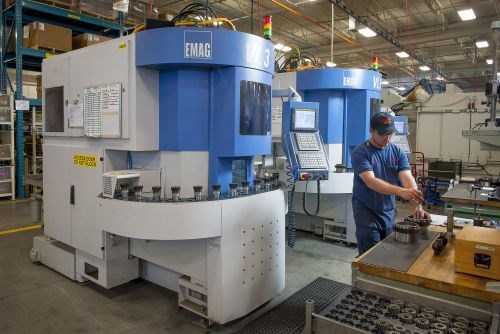Published
Inherently Automated
Automatic loading and unloading is a central design principle of the vertical turret lathe.
Share





With an integrated parts conveyor and a spindle that doubles as a parts loader, each of ODG’s EMAG VL Series machines essentially operates like its own cell.
From simple conveyors to sophisticated robotics, the prevalence of automation equipment in today’s shops shows that getting ahead often requires getting behind a philosophy of removing as much labor as possible from the manufacturing process. Although auxiliary loading/unloading systems are perhaps the most common and straightforward examples of this strategy, one particular type of machine doesn’t depend on optional accessories or add-ons from secondary suppliers. For the vertical turret lathe (VTL), automation is an inherent part of the design.
These machines employ downward-facing spindles that double as parts loaders to provide the same advantages as a gantry robot or similar system—all without requiring additional floorspace or the need to integrate multiple pieces of equipment. One shop that can attest to the advantages of this configuration is Ontario Drive and Gear (ODG). In fact, the Canadian manufacturer credits VTLs from EMAG with helping spur a move from batch-and-queue production to single-piece flow for an important series of gear blanks. Click here to learn more about ODG’s experience.
As it so happens, EMAG is also the manufacturer of what it says is the world’s largest VTL. For a look at some of the most notable attributes of that machine, click here.






















